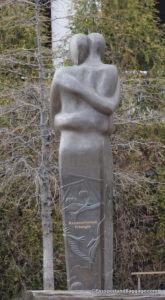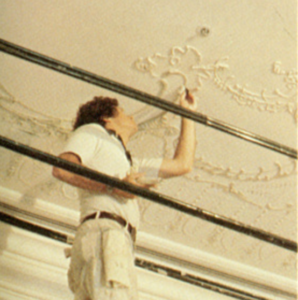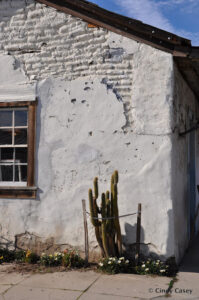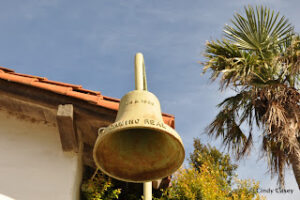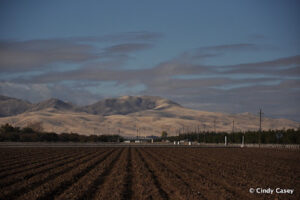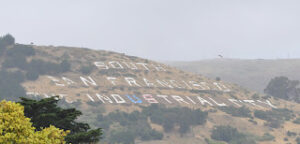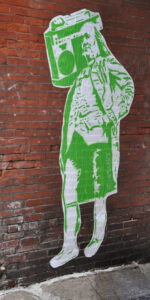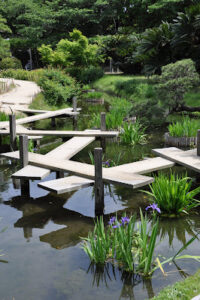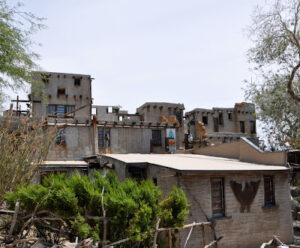Holy Cross Cemetery
Colma, California

Bufano’s gravesite is marked by his own sculpture of St. Francis. The statue overlooks that part of the cemetery that holds the unmarked graves of indigent children, the only part of the cemetery that permitted the type of statuary marking Bufano’s grave.
Bufano was a well known San Francisco artist whose work has been in this site many times.
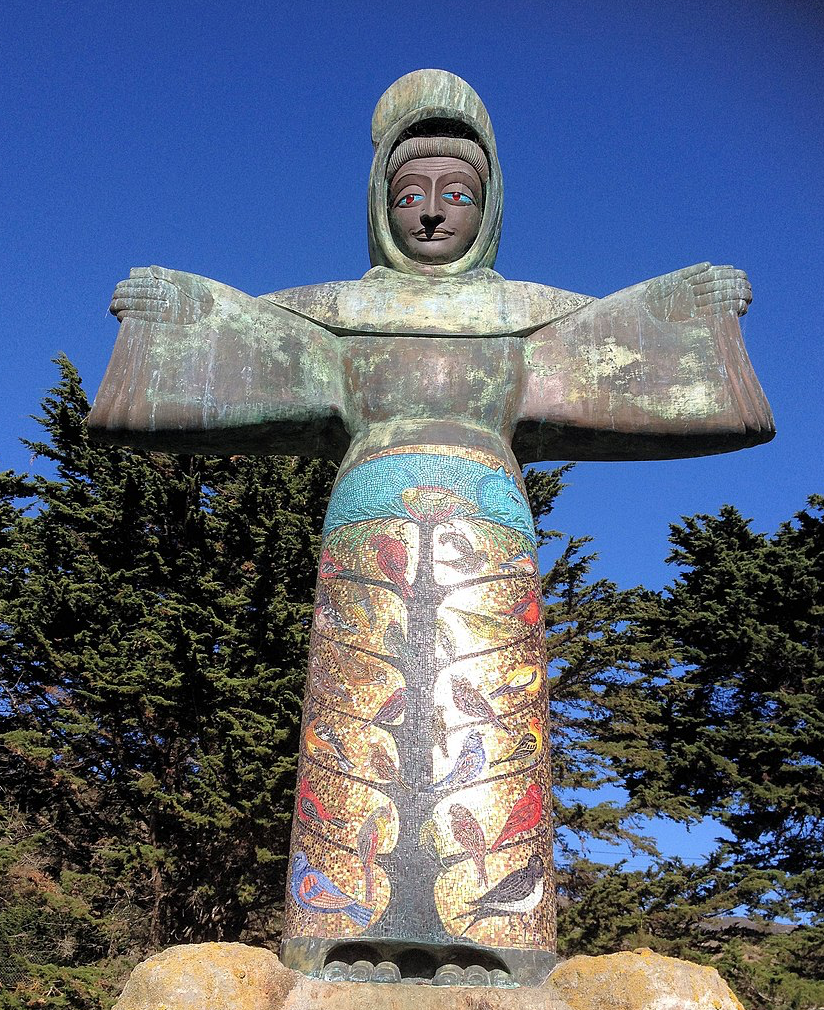
Beniamino Bufano (October 15, 1890 – August 18, 1970) was an Italian American sculptor, best known for his large-scale monuments representing peace and his modernist work often featured smoothly rounded animals and relatively simple shapes. He worked in ceramics, stone, stainless steel, and mosaic, and sometimes combined two or more of these media and some of his works are cast stone replicas.
The tile work on this Saint Francis was done by Alfonso Pardiñas. Alfonso Pardiñas created a number of mosaics in San Francisco, including several for BART stations. His firm was called Byzantine Mosaics.

Saint Francis – Prince of Peace
To the human congregation of the United Nations
-A message to live by-
Lord
Make me an instrument of thy peace
Where there is hatred, let me sow love,
Where there is injury pardon
Where there is doubt, faith
Where there is despair, hope
Where there is darkness, light
Where there is sadness, joy
O Divine master
Grant that I may not so much seek
To be understood as to understand
To be loved, as to love
For it is in giving that we receive
It is in pardoning that we are pardoned
And it is in dying that we are born to eternal life
Beniamino Benevento Bufano
October 15, 1890
August 18, 1970



